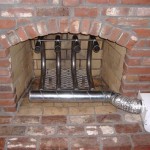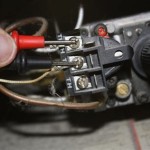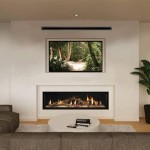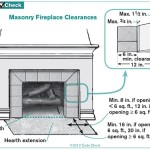The Allure and Practicality of a Wooden Shelf Above a Fireplace
A wooden shelf positioned above a fireplace, often referred to as a mantel, is a common architectural and design element found in numerous homes. It serves both an aesthetic and functional purpose, contributing to the overall ambiance of the room while providing a surface for displaying decorative items or storing small objects. The selection, installation, and maintenance of such a shelf require careful consideration to ensure safety, visual harmony, and long-term durability.
The historical precedent for fireplace mantels extends back centuries, initially serving as structural components designed to prevent smoke from billowing back into the room. Over time, these structural elements evolved into decorative features, becoming increasingly ornate and serving as focal points within domestic spaces. The addition of a shelf above the mantel further enhanced its utility, allowing for the display of family portraits, treasured possessions, and seasonal decorations. Today, the wooden shelf above a fireplace remains a popular design choice, blending tradition with contemporary aesthetics.
Several factors influence the decision to incorporate a wooden shelf above a fireplace. These include the architectural style of the room, the size and type of fireplace, the desired aesthetic, and the intended use of the shelf. A rustic, hand-hewn beam might complement a country-style home, while a sleek, minimalist shelf constructed from reclaimed wood could be ideal for a modern space. Furthermore, the material selection significantly impacts the shelf's appearance, durability, and fire resistance.
Key Considerations for Selecting the Right Wood
The selection of wood for a shelf above a fireplace is paramount, affecting both its visual appeal and its ability to withstand the heat generated by the fire. Different types of wood possess varying characteristics in terms of grain, color, density, and resistance to warping or cracking. Careful consideration of these properties is crucial for ensuring the longevity and safety of the shelf.
Hardwoods, such as oak, maple, and walnut, are generally preferred choices due to their durability and resistance to heat. Oak, known for its strength and distinctive grain pattern, is a classic option that can complement a wide range of interior styles. Maple, with its smooth texture and light color, offers a more contemporary aesthetic. Walnut, prized for its rich, dark tones and elegant grain, adds a touch of sophistication to any room. These hardwoods are less likely to warp or crack under the influence of heat, making them suitable for placement above a fireplace.
Softwoods, such as pine, fir, and cedar, are less dense than hardwoods and tend to be more susceptible to heat damage. While they may be more affordable and easier to work with, they require additional protection to prevent warping, cracking, or even combustion. If a softwood is chosen, it is imperative to apply a fire-retardant finish and to ensure that the shelf is positioned at a safe distance from the fireplace opening to minimize heat exposure.
Reclaimed wood, sourced from old barns, factories, or other structures, offers a unique aesthetic and a sustainable alternative to newly harvested timber. Reclaimed wood often possesses a rich patina and character that cannot be replicated with new wood. However, it is essential to ensure that reclaimed wood is properly treated to remove any contaminants or insects before it is used for a fireplace shelf. Furthermore, reclaimed wood may exhibit greater variability in terms of moisture content and structural integrity, requiring careful assessment during installation.
The finish applied to the wood also plays a crucial role in its protection and appearance. Heat-resistant finishes, such as varnish or lacquer, can help to protect the wood from the drying effects of the fireplace heat. Water-based finishes are generally preferred over oil-based finishes, as they are less likely to yellow or darken over time. The choice of finish should also complement the overall aesthetic of the room, whether it is a natural, matte finish or a high-gloss sheen.
Ensuring Safe Installation Practices
Proper installation is critical for ensuring the safety and stability of a wooden shelf above a fireplace. A poorly installed shelf can pose a significant hazard, potentially collapsing under its own weight or due to the vibrations generated by the fire. Strict adherence to building codes and safety guidelines is essential throughout the installation process.
The height of the shelf above the fireplace opening is a primary safety consideration. Building codes typically specify minimum distances between combustible materials and the fireplace opening to prevent ignition. The specific distance will vary depending on the type of fireplace and the local building codes, but it is generally recommended to maintain a minimum clearance of 12 inches above the fireplace opening. Consulting with a qualified building inspector or contractor is advisable to ensure compliance with all applicable regulations.
The method of attachment is equally important for ensuring the structural integrity of the shelf. The shelf must be securely anchored to the wall using appropriate hardware, such as heavy-duty brackets, toggle bolts, or lag screws. The type of hardware used will depend on the material of the wall (e.g., brick, drywall, concrete) and the weight of the shelf and its contents. It is crucial to select hardware that is specifically designed for the intended application and to follow the manufacturer's instructions carefully.
Before installing the shelf, it is essential to locate any electrical wiring or plumbing pipes that may be concealed within the wall. Drilling or cutting into these utilities can create a serious safety hazard. A stud finder can be used to locate studs behind drywall, providing a secure anchor point for the shelf. If there is any doubt about the presence of utilities, it is advisable to consult with a qualified electrician or plumber before proceeding with the installation.
The weight capacity of the shelf should also be considered. Overloading the shelf with heavy objects can compromise its structural integrity and potentially lead to its collapse. It is important to distribute the weight evenly across the shelf and to avoid placing excessive weight on any single point. Regular inspection of the shelf and its attachments is recommended to identify any signs of weakness or damage.
Maintaining a Wooden Shelf Above a Fireplace
Regular maintenance is crucial for preserving the appearance and extending the lifespan of a wooden shelf above a fireplace. The heat and smoke generated by the fireplace can contribute to the accumulation of dust, soot, and other debris, which can dull the finish and potentially damage the wood over time. Routine cleaning and preventative measures are essential for keeping the shelf in optimal condition.
Dusting the shelf regularly with a soft cloth or duster is the first step in maintaining its cleanliness. This helps to remove loose particles of dust and soot before they can become embedded in the wood's finish. For more stubborn dirt or grime, a mild soap solution can be used. It is important to avoid using harsh chemicals or abrasive cleaners, as they can damage the finish and potentially scratch the wood.
Applying a furniture polish or wax periodically can help to protect the wood and enhance its shine. Choose a product that is specifically designed for wood furniture and follow the manufacturer's instructions carefully. Avoid using excessive amounts of polish or wax, as this can create a sticky residue that attracts dust. A thin, even coat is all that is needed to protect the wood and restore its luster.
Addressing any cracks or damage promptly is essential to prevent further deterioration. Small cracks can be filled with wood filler, which can be sanded smooth and stained to match the surrounding wood. Larger cracks or damage may require professional repair. Regular inspection of the shelf and its attachments will help to identify any potential problems before they become more serious.
The fireplace itself should also be properly maintained to minimize the amount of smoke and soot that is released into the room. Regular cleaning of the chimney and fireplace will help to ensure that the fireplace operates efficiently and safely. Consider using a fireplace screen to prevent sparks from escaping and to further reduce the amount of soot that accumulates on the shelf.
By carefully selecting the wood, ensuring safe installation practices, and implementing a routine maintenance schedule, homeowners can enjoy the beauty and functionality of a wooden shelf above a fireplace for many years to come. This architectural element provides both aesthetic appeal and practical utility, enhancing the warmth and character of any living space.

Farmhouse Mantel Real Wood Dogberry Collections

Floating Fireplace Shelf Experience Elegance With Oak

Over Range Shelf Fireplace Kitchen Aga Cooker Prime Or Rustic With Corbels Hong Kong

Design Idea For Above A Fireplace Stack The Shelves

Mantel Shelves Fireplace Shelf Scarlett Fireplaces

30 Tips To Diy And Decorate Your Fireplace Mantel Shelf

Traditional Solid Oak With Corbels Fireplace Mantel Shelf Bonfire Berkshire

Floating Shelf Mantel Fireplace Shabby Coastal Farmhouse Decor

6 Great Ideas For Decorating Fireplace Hearths All Pro Chimney Service

Fireplace Mantel Colors Wood Beam That Extends To Floating Shelf With Cabinet Living Room Decor Remodel Bookshelves
Related Posts








